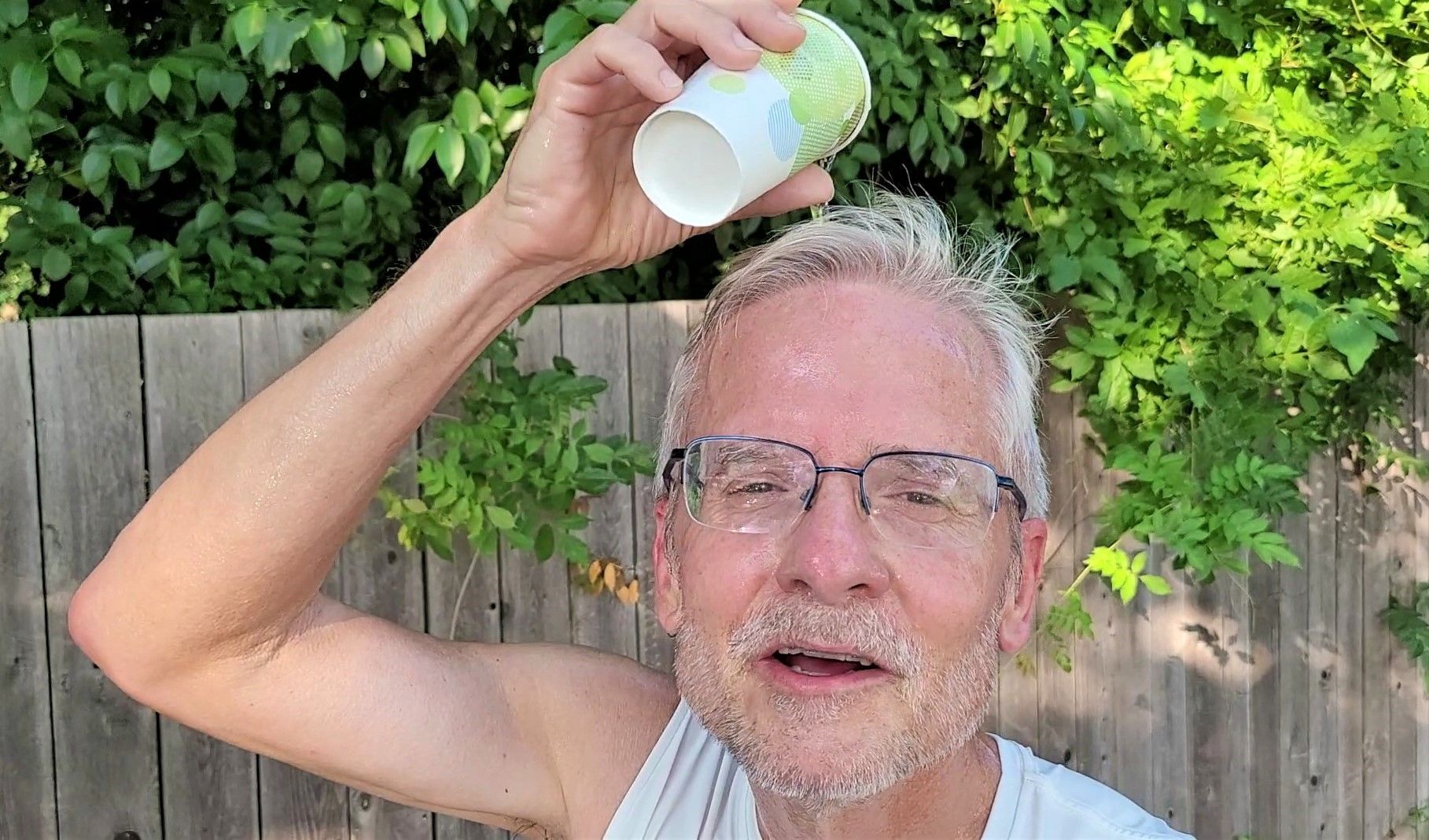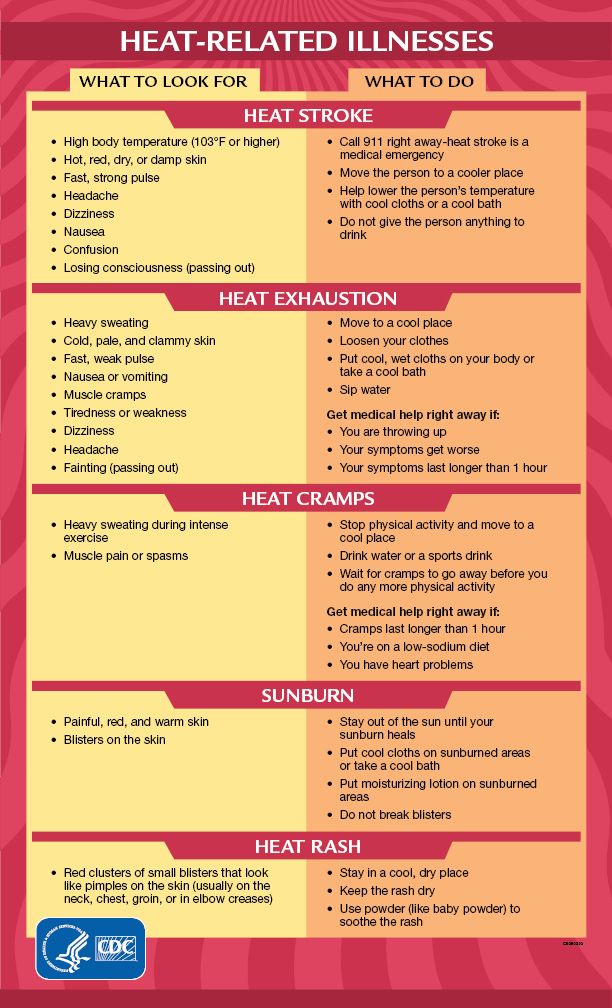Running hot takes: How to beat this heat in the Triad
The temperature in the Triad today could reach 96 degrees. If you're getting in a run, Cone Health's Dr. Jason Matthews and coaches Jen Goff and Thad McLaurin have insight on how to help you manage.

The sun baked not only the unshaded stretches of the Atlantic & Yadkin Greenway but sapped runners’ energy, too.
As a stout group from RunnerDude’s Fitness worked out at 6 o’clock Monday night in Greensboro, the temperature still registered 90 degrees with the heat index sitting on 95.
Just imagine today.
A high near 96 degrees, possibly a record-breaker at Piedmont Triad International Airport, is forecast, with three straight days to follow that could hit 95.
Some of the tips for managing heat and avoiding illness are well-known – wear light clothing, run during cooler parts of the day, find shaded areas or trails and hydrate. But Cone Health's Dr. Jason Matthews, a Greensboro native who specializes in family medicine and sports medicine in Mebane, and RunnerDude’s Thad McLaurin and Jen Goff, owner of In Pursuit Running offer deeper advice and insight on what all of that means and how to measure success during hot-weather runs.
How to fuel – and refuel
Matthews: "For your group, I want y'all to view hydration as an everyday thing, even on your rest days, your recover days. Even if you're not planning on running for a couple of days, you don't want to skimp on making sure that you're well-hydrated leading up into that day of the run. And that doesn't have to be a triathlon or a big race; it can just be your normal routine.
"First is being in tune with your body, knowing your hydration status. The best indicator is essentially urine color. You don't want to be crystal clear white; you don't want to be dark yellow. Just a light tinge of yellow. That usually means that the body is having enough water in the tank that it can get rid of some of the excess.
"While we're talking what to drink: What to not drink. I'm not saying don't ever drink alcohol, but especially if you are leading up to a couple days of running, alcohol can do a couple of bad things. It can dehydrate you. It'll override the kidneys' ability to mess with things and keep them correct and basically make you dump out a lot of water. Sometimes, maybe counterintuitively, it might make you sleepy, but the quality of sleep that you get from a night of alcohol or a day of alcohol is not high-quality sleep. So you're already kind of behind the 8-ball from a hydration standpoint and an energy functional standpoint that next day. ...
'About 16 ounces an hour before the run, and then you want to back off and chill out. ... Right before the run, maybe 10-15 minutes before, top it off with maybe another 5 ounces of water.'
"Give yourself about an hour before activity to get in about 16 ounces of water, or about 500 MLs of water. You want to avoid caffeine, which might be counterintuitive to some folks because it may give you some element of performance, but from a purely hydration standpoint that is also going to kind of give us the same results, too, where you are dumping excess fluid. About 16 ounces an hour before the run, and then you want to back off and chill out. You don't want to keep hitting too much water because then you're going to be mid-run and 'I've got to run off the trail and take care of this.' Right before the run, maybe 10-15 minutes before, top it off with maybe another 5 ounces of water.
"If it's one of the big-mileage days, you do want to try to plan for that. And the planning involves trying to get some type of hydration. We're talking about things like sips, about every 15 to 20 minutes, just to ensure that you are replenishing what your body is getting rid of throughout that time. The longer the run, the more that planning has to start to incorporate things like electrolytes because your body is going to get rid of all of that to help you sweat, keep your body temp from going off the charts. ...
"As specialized as I'm trying to give you, these are still relatively general. The best bet, safest bet, is whether you're starting a program, you've been running for decades or you've been running into some snags, sometimes checking in with a physician specifically trained in sports medicine, like Cone Health, can really try to help give you some numbers. We are eggheads in medicine, so we like to give you plenty of numbers.
"One last bit: Runners are going to have aches and pains. If it gets to the point where those aches and pains are leading to the use of things like anti-inflammatories (Advil or Aleve), those can mess with how our body holds onto fluid, which can almost overdilute us."
Goff: "If you can carry a CamelBak or something where you can have the water with you, it's going to make it a lot easier. When you're training for, say, a marathon and you have to start incorporating food or gels into your system, my rule of thumb is if your run lasts more than 90 minutes, you've got to start taking about 100 calories every 50 minutes.
'Sixty-four ounces of water (daily) is normally what I recommend. But I also recommend incorporating in some sports drinks.'
"I tell my runners in the heat that if their run is going to last 70 minutes or more, they need to start taking about 100 calories every 40 minutes. So not just looking at hydration but looking at replacing electrolytes with more food because your body is going to reach for those stores, too. ...
“If you have a specific day that you want to be hydrated – of course, you're supposed to be doing it every day – you should make sure that you're really following hydration protocol each of those seven days leading up to the day that you feel like really matters. I'm pretty bad at it myself just because it makes you have to pee a lot and that's annoying. But 64 ounces of water (daily) is normally what I recommend. But I also recommend incorporating in some sports drinks. You don't want to get to the point of hyponatremia where you flush out all the sodium; you want to make sure that you're mixing in some sports drink on top of that 64 ounces of water.
McLaurin: "You want to make sure that you get water in during the run, depending on how long the run is. If it's less than an hour, water is going to be fine. If it's over an hour, you need to have something that's got electrolytes in it, mainly sodium and potassium for runners. If you deplete those, you can inhibit your ability to hydrate well. You can't get the water out to the rest of your body, and depleted potassium increases your chance for cramping. ...
'On an oppressive day, you could easily lose 2, 3, 4 pounds of water. So that's the amount of water, 16 ounces per pound, that you need to get back in.'
"Post-run is where most people drop the ball, making sure you get in around the amount that you actually lost during the run. There is a method you can use to gauge that, the sweat test. Before you go, take your shoes off, weigh yourself, do the run, come back, take your shoes off, weigh yourself again. For every pound you lost, you need to get in 16 ounces of water. So on a mild run, it may be nothing or just minimal, a fourth of a pound. On an oppressive day, like today, you could easily lose 2, 3, 4 pounds of water. So that's the amount of water, 16 ounces per pound, that you need to get back in. That doesn't mean you have to drink all that immediately. But during the course of the rest of that day, you need to try to get in that water to replenish. Otherwise you end up the next day or the next time you run in a deficit. And that's where you can end up having issues with heat exhaustion because you just don't have the water in your body."
Manage pace, reward effort
McLaurin: "That's the hardest for runners, particularly if they're training, because their training plan says 'you need to be doing X pace.' But on a day like today the dew point was 70. For my runners, I give them a dew point expectation scale. The science behind (dew point) is the temperature at which water condensates. When it's high, that's when the water doesn't go anywhere. The first system your body uses to cool itself off is you sweat and it evaporates. But when the dew point is high, it sits there and you're sopping wet. It can't evaporate. So you have a backup system where your body diverts oxygenated blood to the skin to cool you down. That means you have less oxygenated blood going into your muscles, which means you can't run as hard. That's the days you feel like you're really running through mud, slogging along, or you feel like you're making pace because you're working so hard and then you look at your watch and you're like a minute and a half off. And that can really play with your head.
'If they know before they go out, 'OK, it's in the 70s for dewpoint, that means it's going to be a hard run,' they already know they're not going to make pace. So they run by effort.'
"So that expectation scale breaks up the ranges of dew point and what to expect when it falls in those ranges. A lot of times for runners if they know before they go out, 'OK, it's in the 70s for dewpoint, that means it's going to be a hard run,' they already know they're not going to make pace. So they run by effort. And if they feel like they're running at pace, but they're a minute off, they're still getting the same benefit."
Goff: "Lower expectations. Most often in the summer, I don't give them specific target paces for workouts; it always goes by effort. I gave a runner today 3 x 2 miles. 'Let's just go by effort' and here's what the effort should be; you should be running at about half marathon effort. If your normal half marathon pace is, say, eight minutes, when you're running in a hundred degrees, it could be more like nine minutes. If you're going by effort, you're still getting in the same workout and you just don't need to worry about the actual pace. …
'When it's hot like this, on average at the same effort, most runners are about 45 seconds per mile slower.'
"When I get overheated, the first thing that happens to me is I get nauseous. People stop sweating or they start to get chills, but I start to get nauseous. That's my signal that I need to cut it off. It's just knowing your body and knowing those signs. When it's hot like this, on average at the same effort, most runners are about 45 seconds per mile slower. If you're running in 50-degree weather and you're running at 5K at a 6:30 pace, I wouldn't be surprised if it scaled back to like a 7:15 pace (in the heat), and that's normal. Runners start to get anxious that it's their fitness when really it's just the heat. I always tell runners, just get through the summer and be smart because if you do you're going to be flying when the fall rolls around. But I do think a lot of runners just give up in the summer because they think it's really them and they underestimate how much the heat affects them."
More words of wisdom
The buddy system: "When it's this hot, if at all possible, run with a buddy. They can spot that you're having trouble. You can do that with a buddy, to keep tabs on each other." – McLaurin.
Size up: "I tell my runners that they should go up a half-size in their shoes because your feet swell. I wear a half-size bigger in the summer than I do in the winter, and that's because my feet swell and usually my feet will fall asleep and that's not a comfortable feeling. And then you don't have enough room and it makes you more sweaty.” – Goff.
Braids and buns: "This is more specific to women with long hair, but I struggle sometimes when your hair starts to stick to the back of your neck. So I started running in a braid that would keep it off my neck or even a bun. That actually helps me a ton.” – Goff.
Hitting the spot: "If I pour water right on the back of my neck, that actually cools me off pretty good. A lot of people sometimes just splash it right on their torso. I actually pour it on the back, and for me that makes a pretty big difference." – Goff.
The torrid Triad
The high temperature Monday and forecast highs, from the National Weather Service, for the remainder of the week at Piedmont Triad International Airport in Greensboro:
MONDAY: 91
Record: 103 in 1914 | Normal: 84.8
TUESDAY: 96 (heat index 105)
Record: 98 in 1926 | Normal: 85.0
WEDNESDAY: 95 (heat index 102)
Record: 97 in 1926 | Normal: 85.3
THURSDAY: 93
Record: 98 in 2015 | Normal: 85.5
FRIDAY: 96
Record: 98 in 1944 | Normal: 85.8
SATURDAY: 86
Record: 100 in 1944 | Normal: 86
Cooler heads will prevail this weekend
While the week will serve up difficult conditions, a low of 68 early Saturday morning would be a bit tolerable for group and long runs and races.
And lows of 60 early Sunday and 62 early Monday will make those mornings – dare we say – unseasonably cool before the official start of summer at 5:14 a.m. EDT Tuesday.
Resources
Learn more about heat illness from the Centers for Disease Control.

